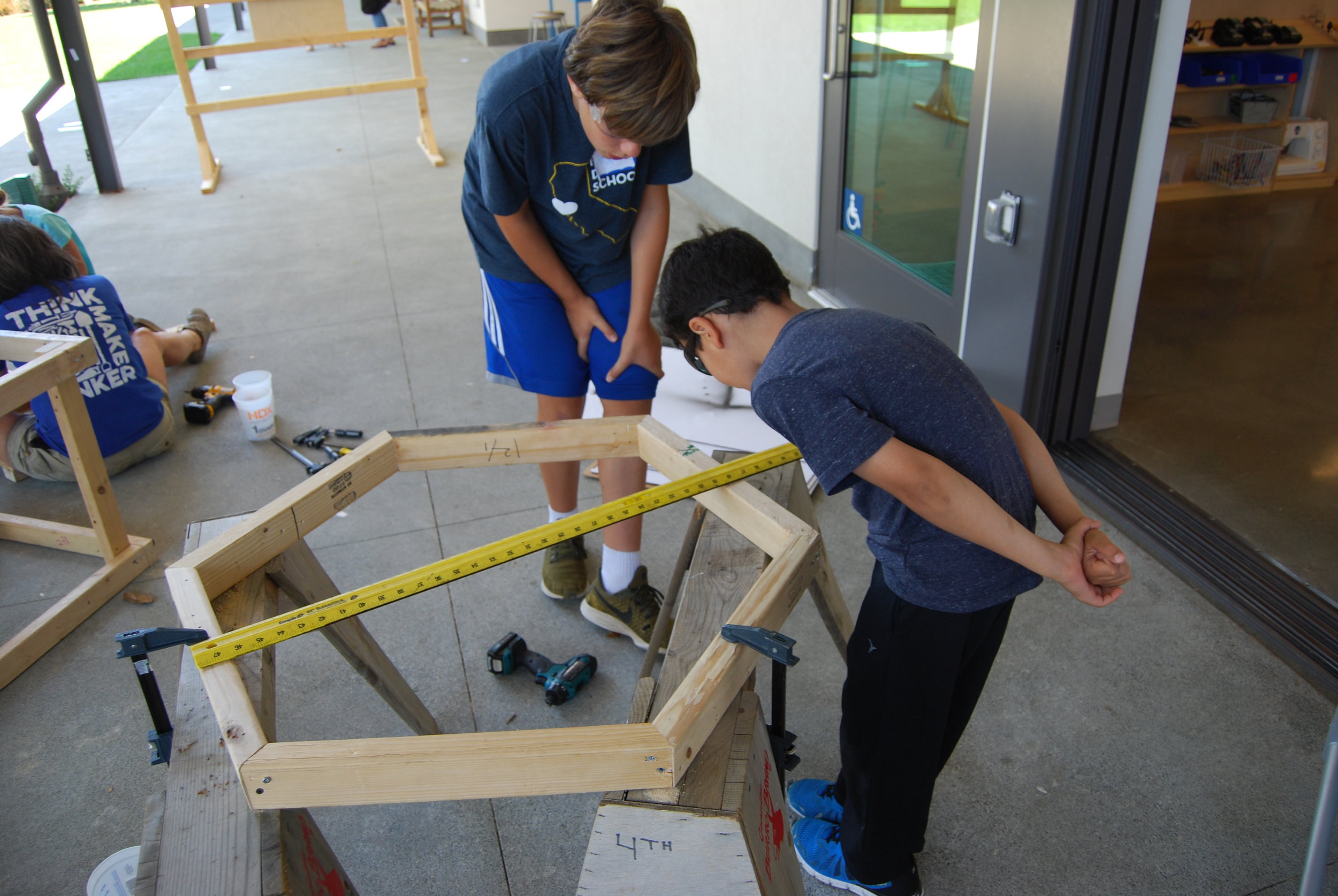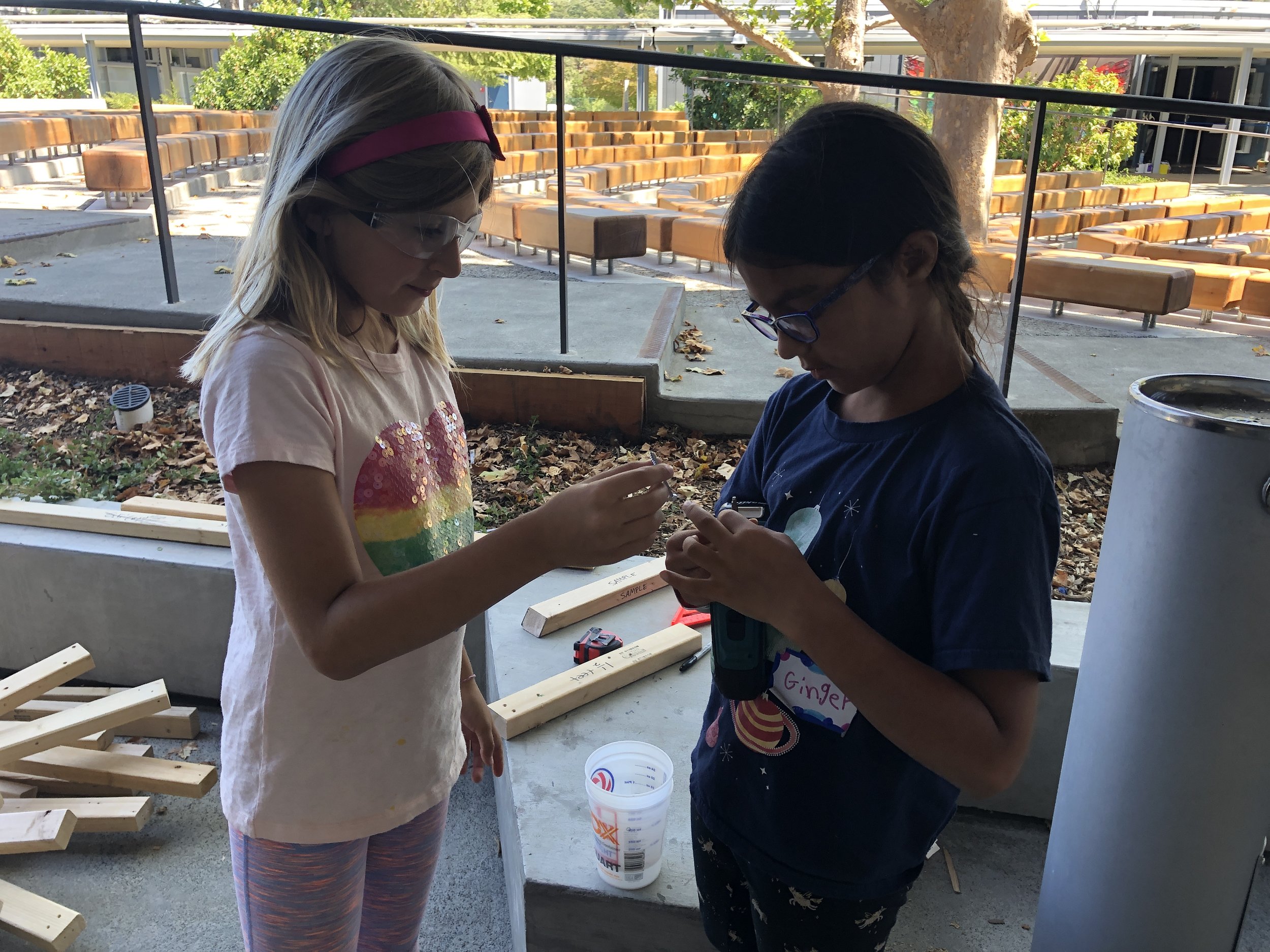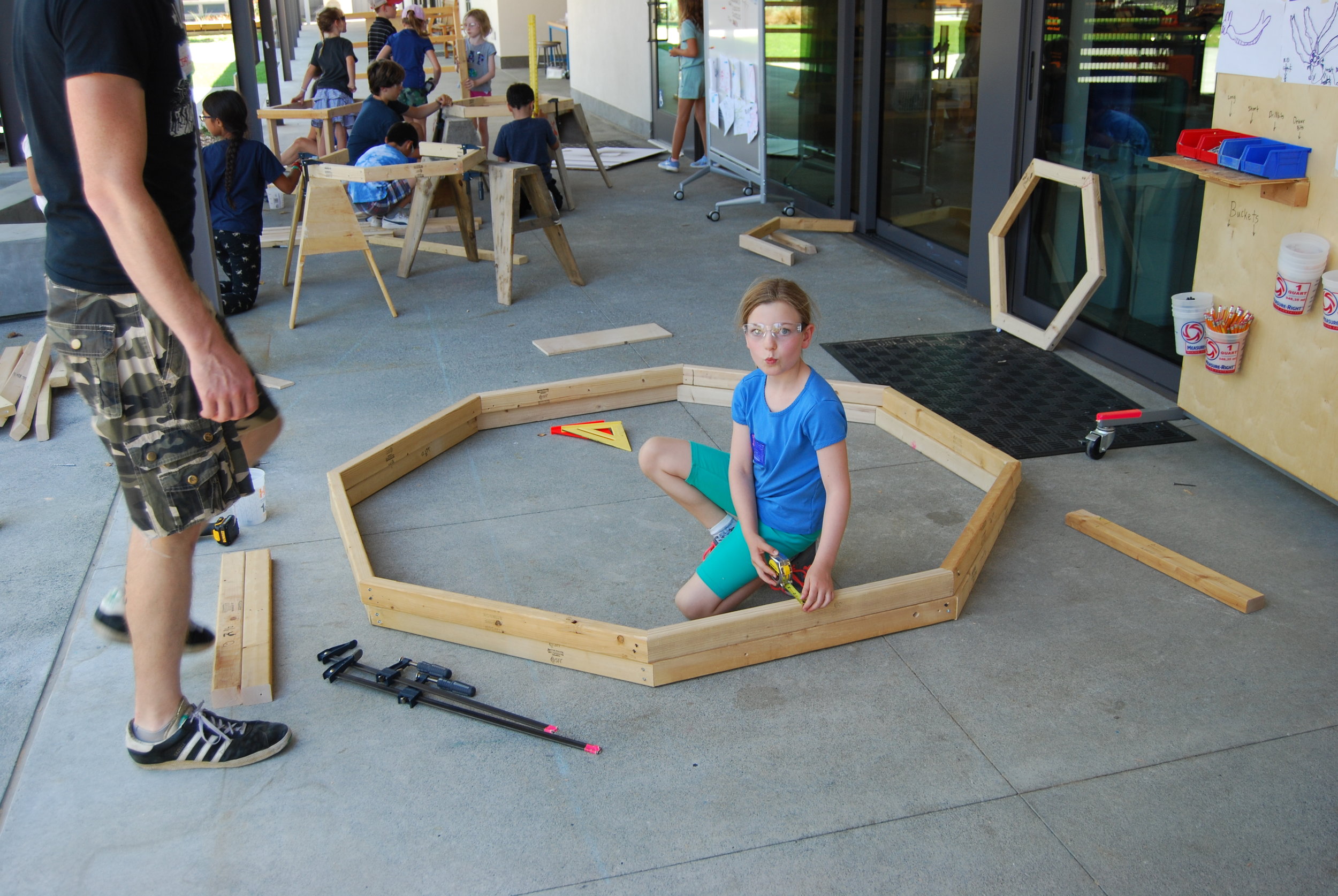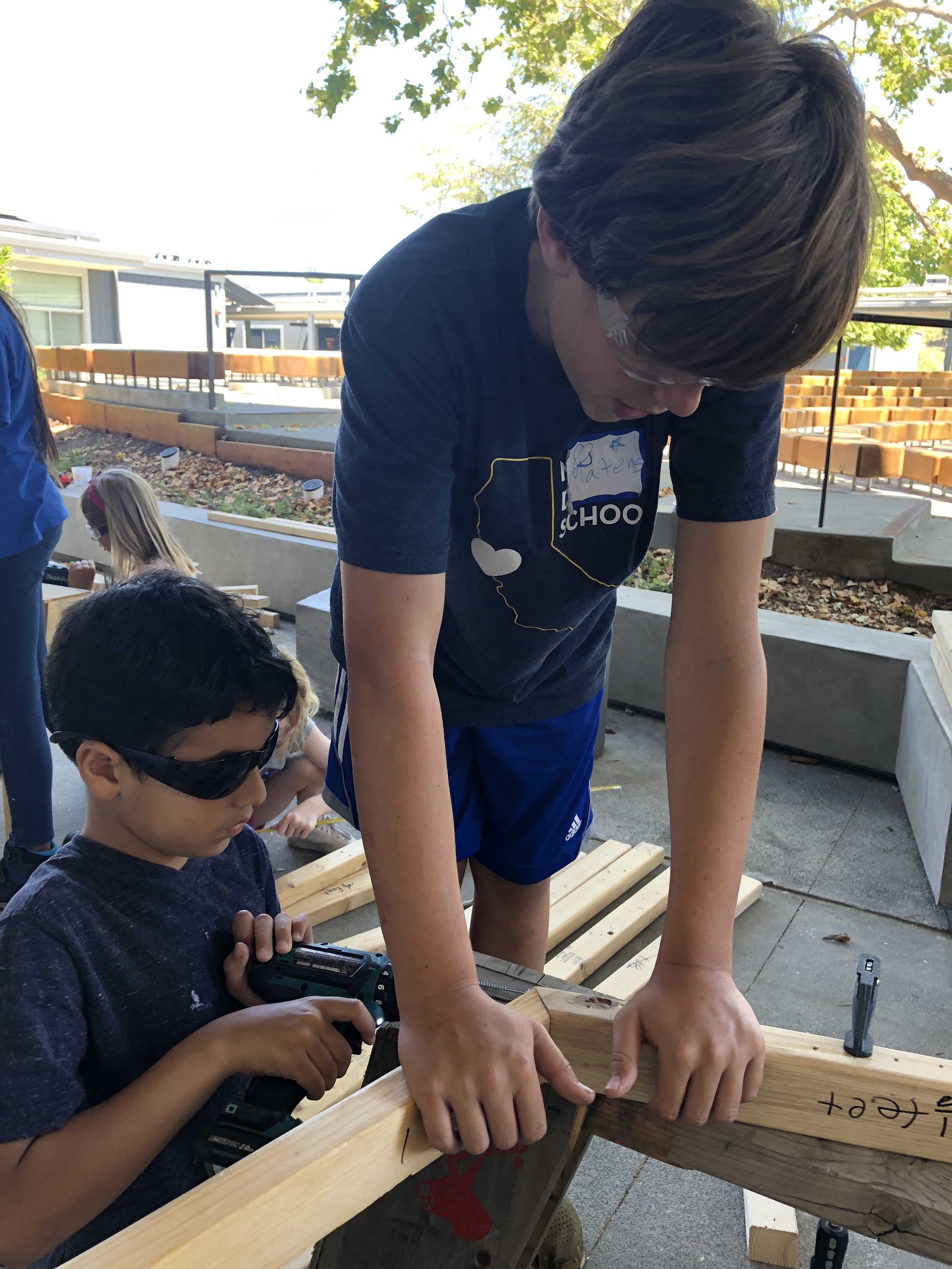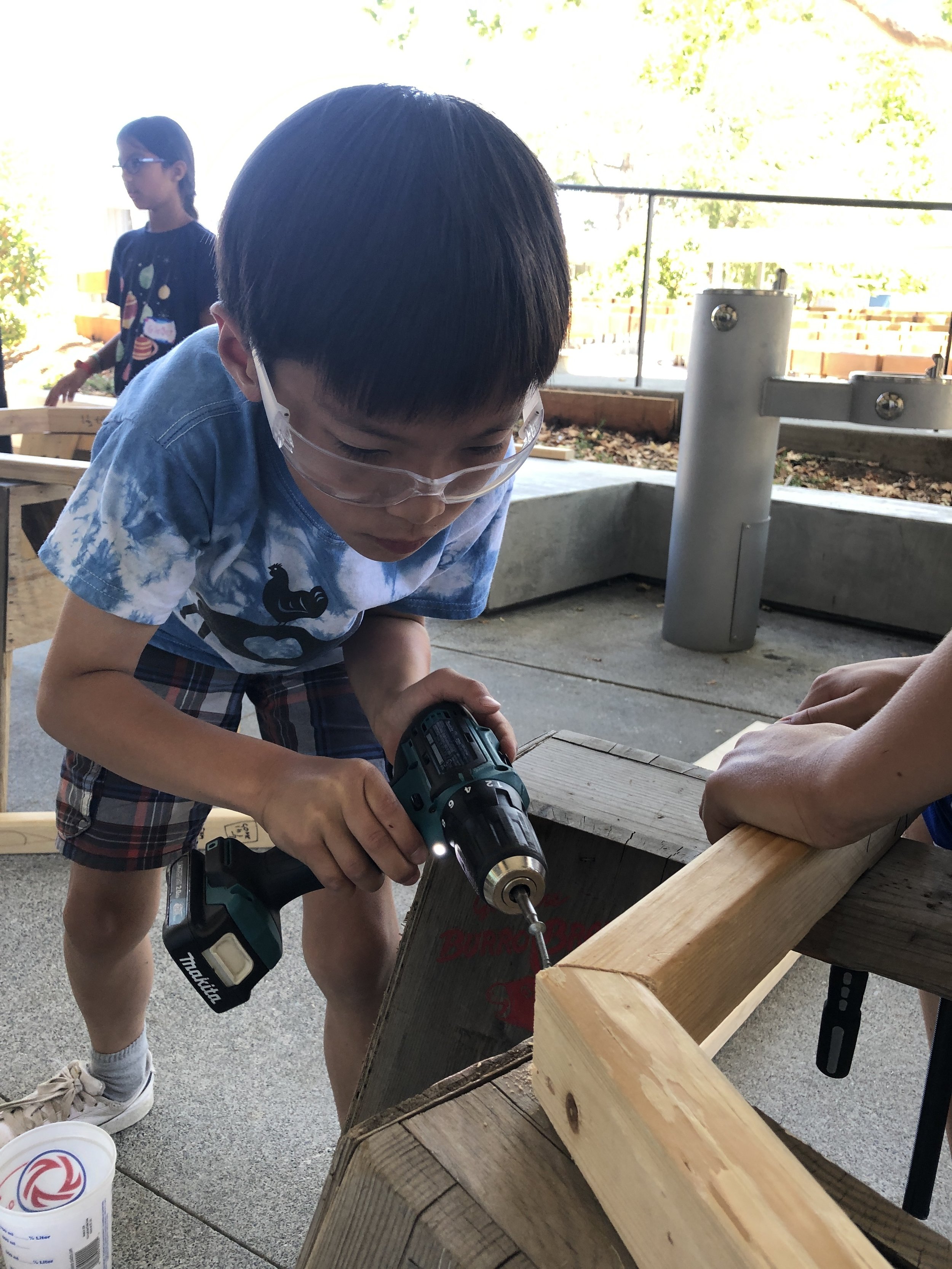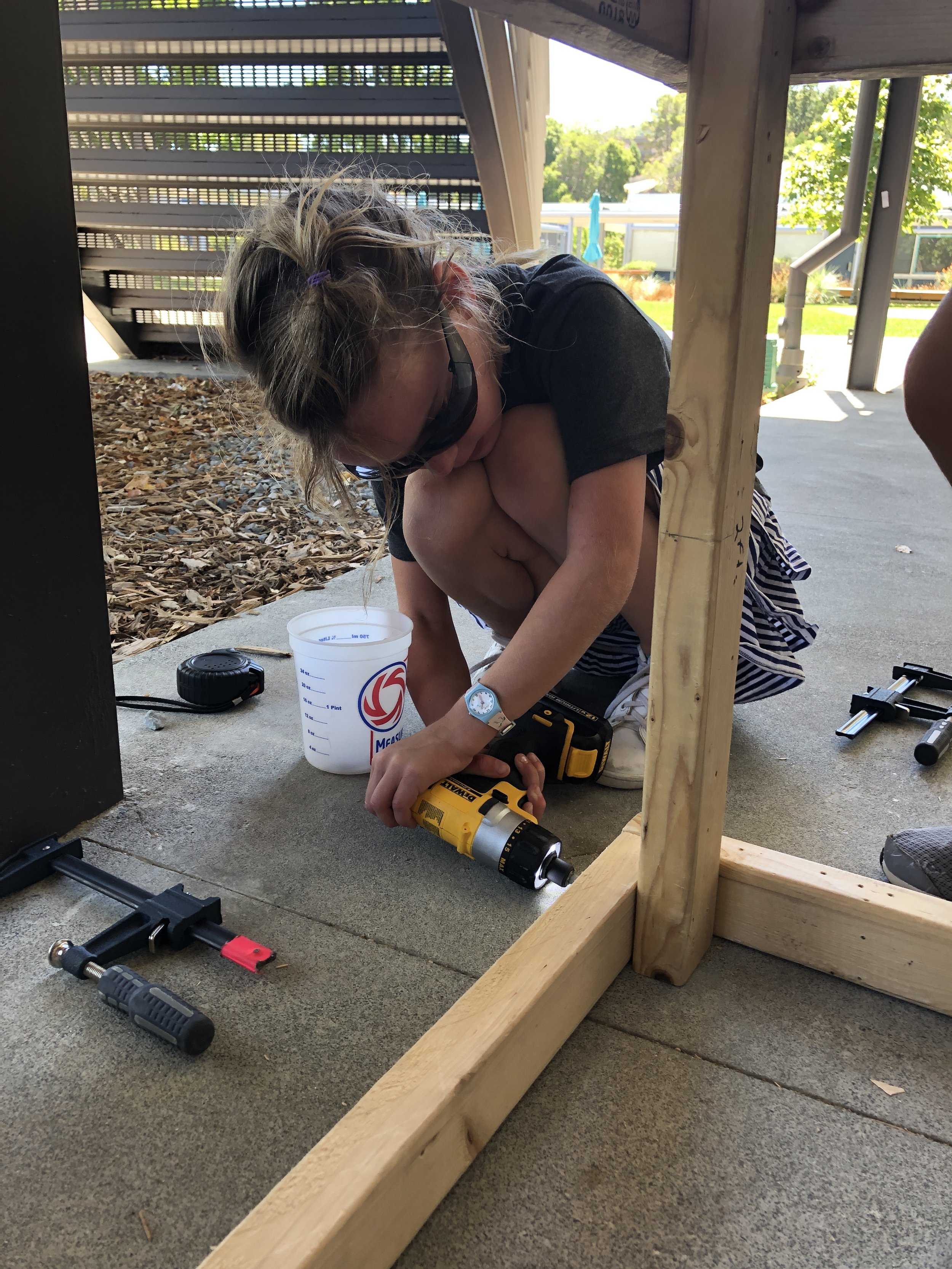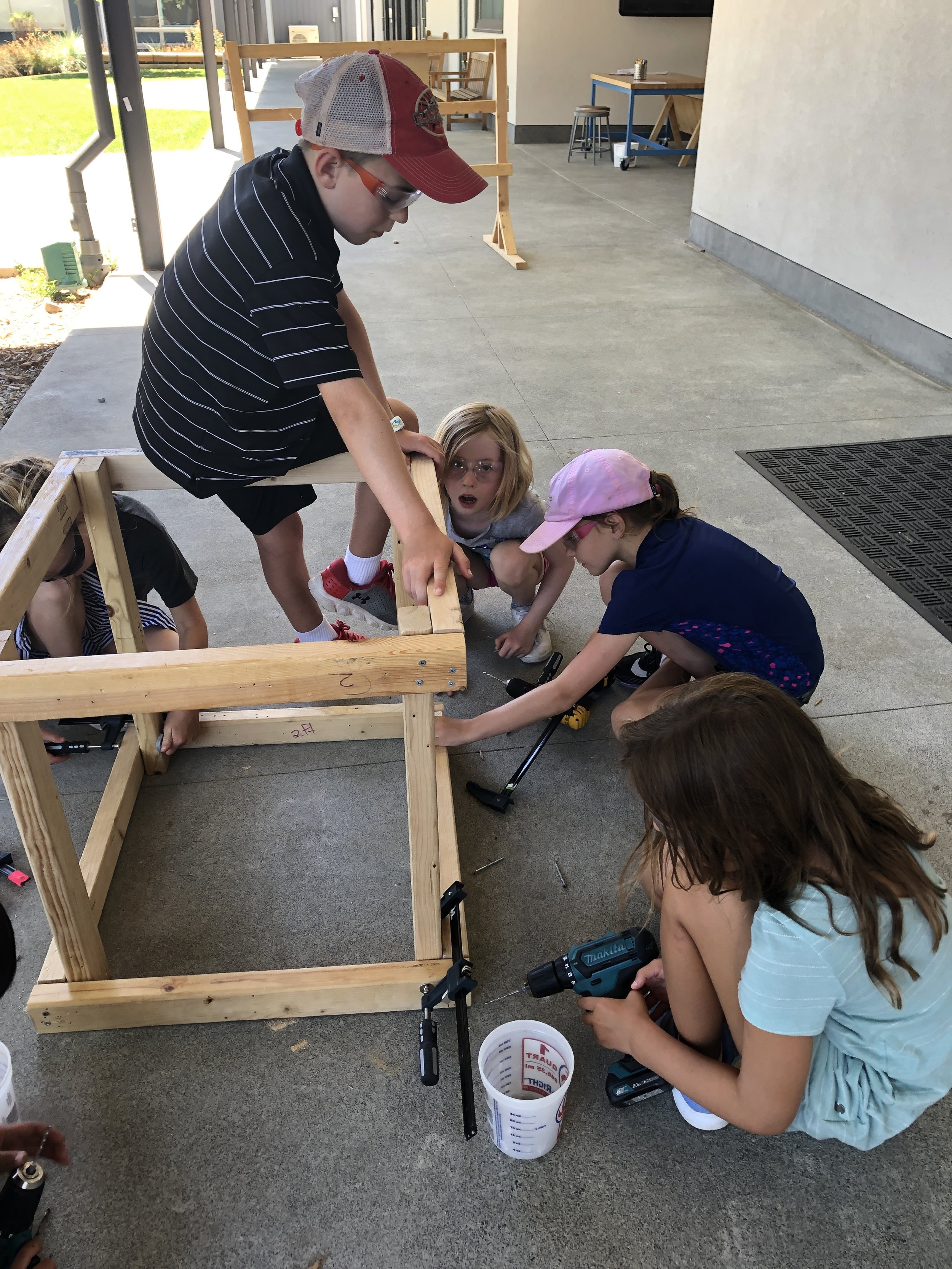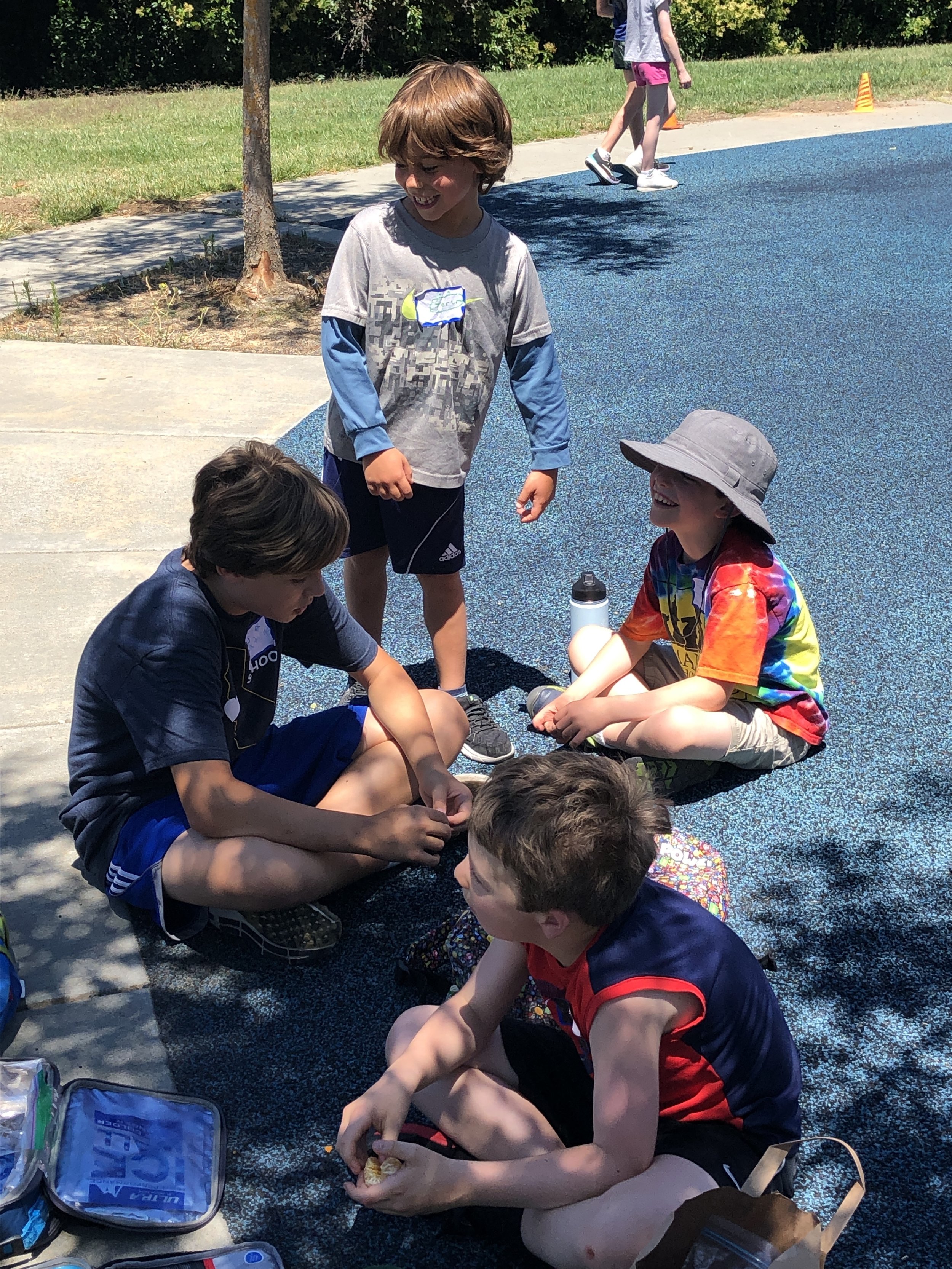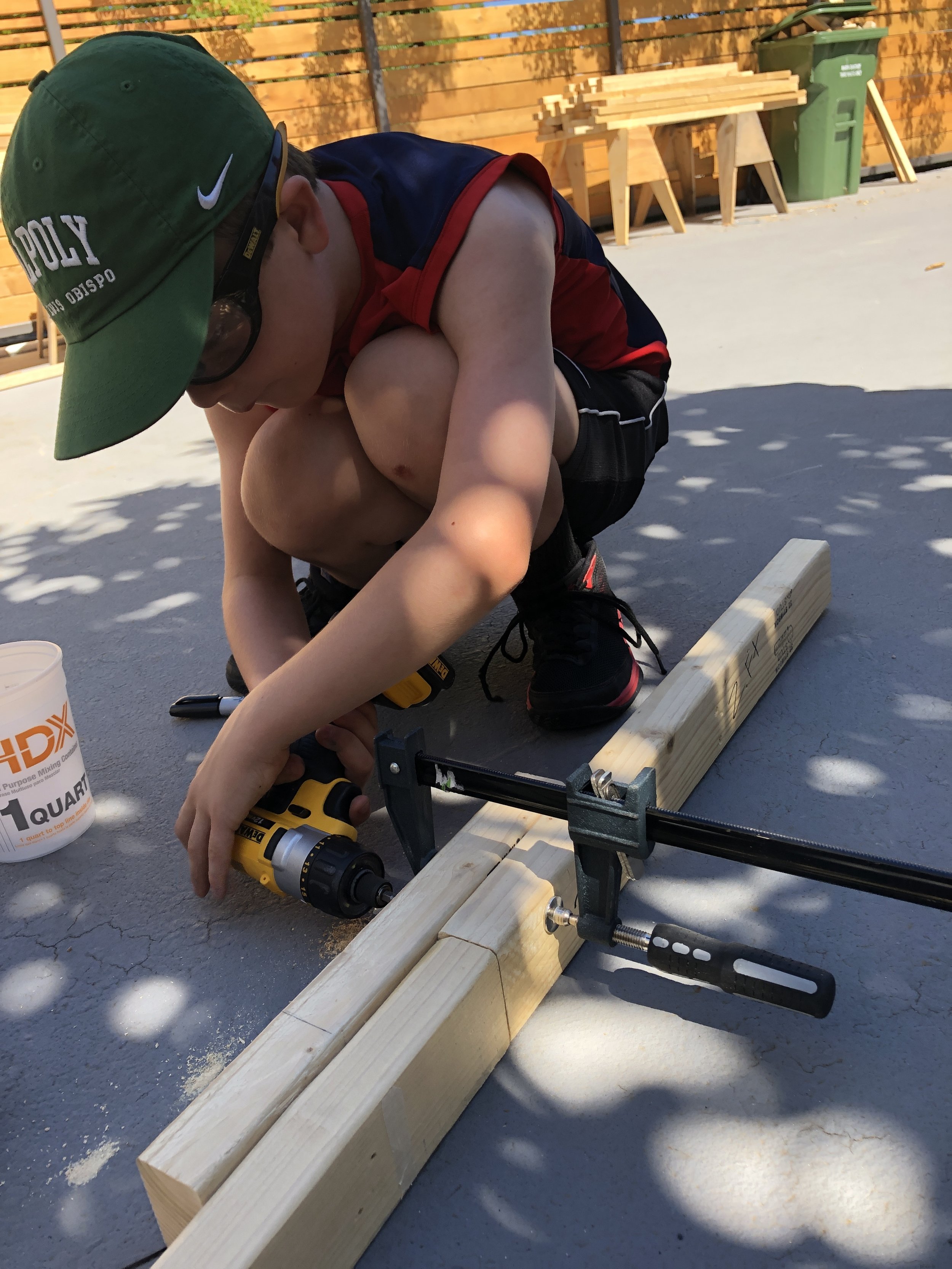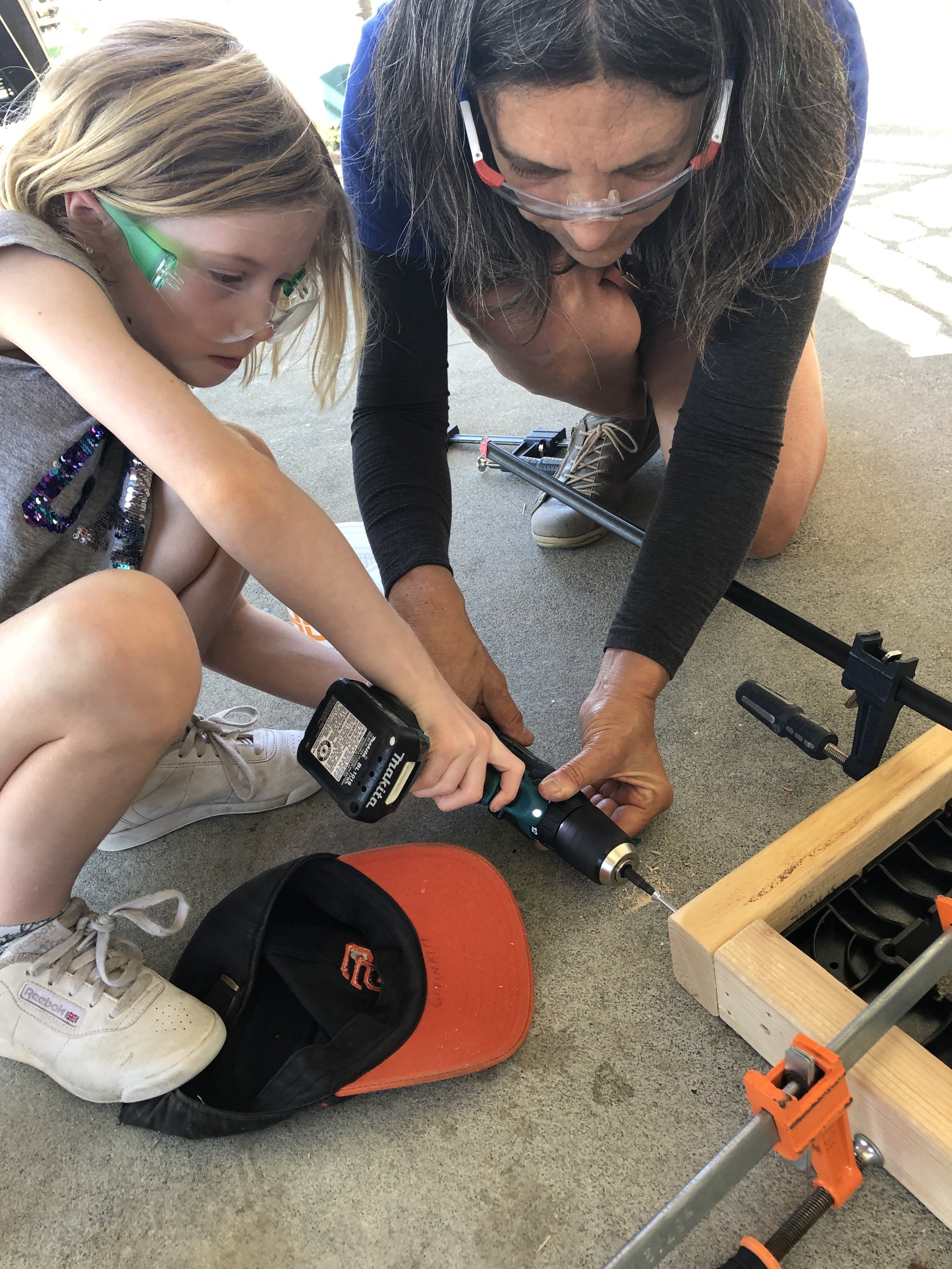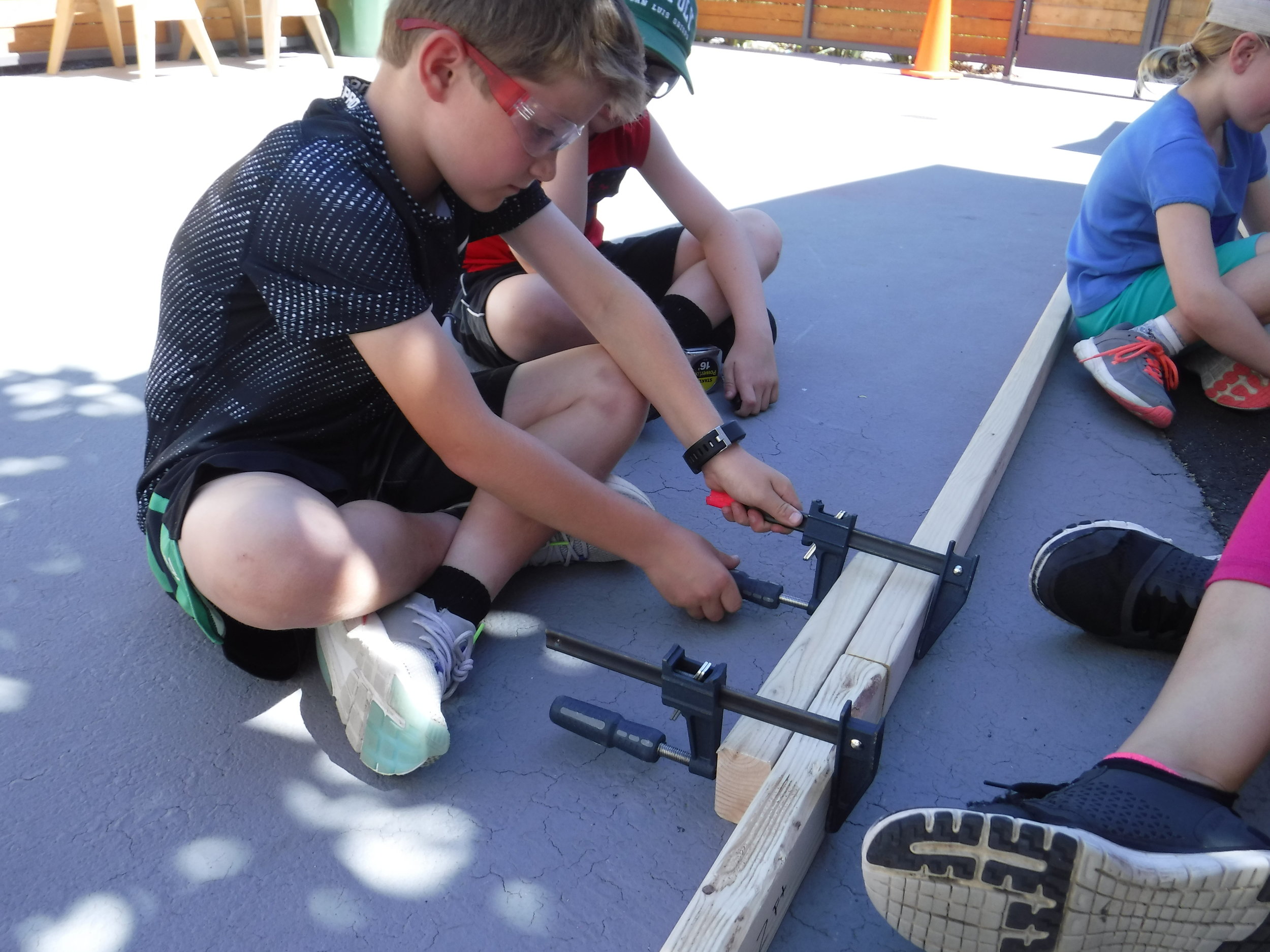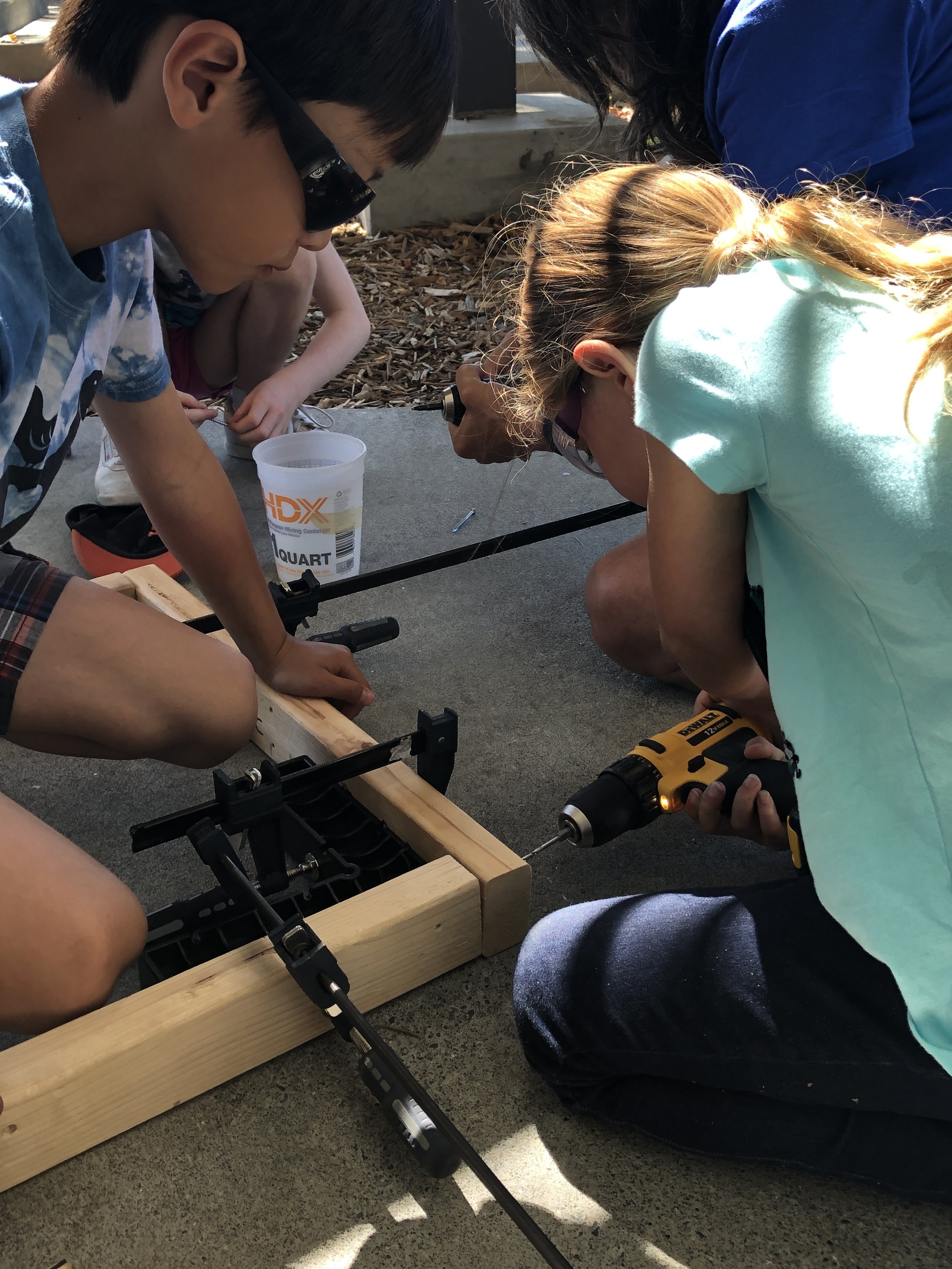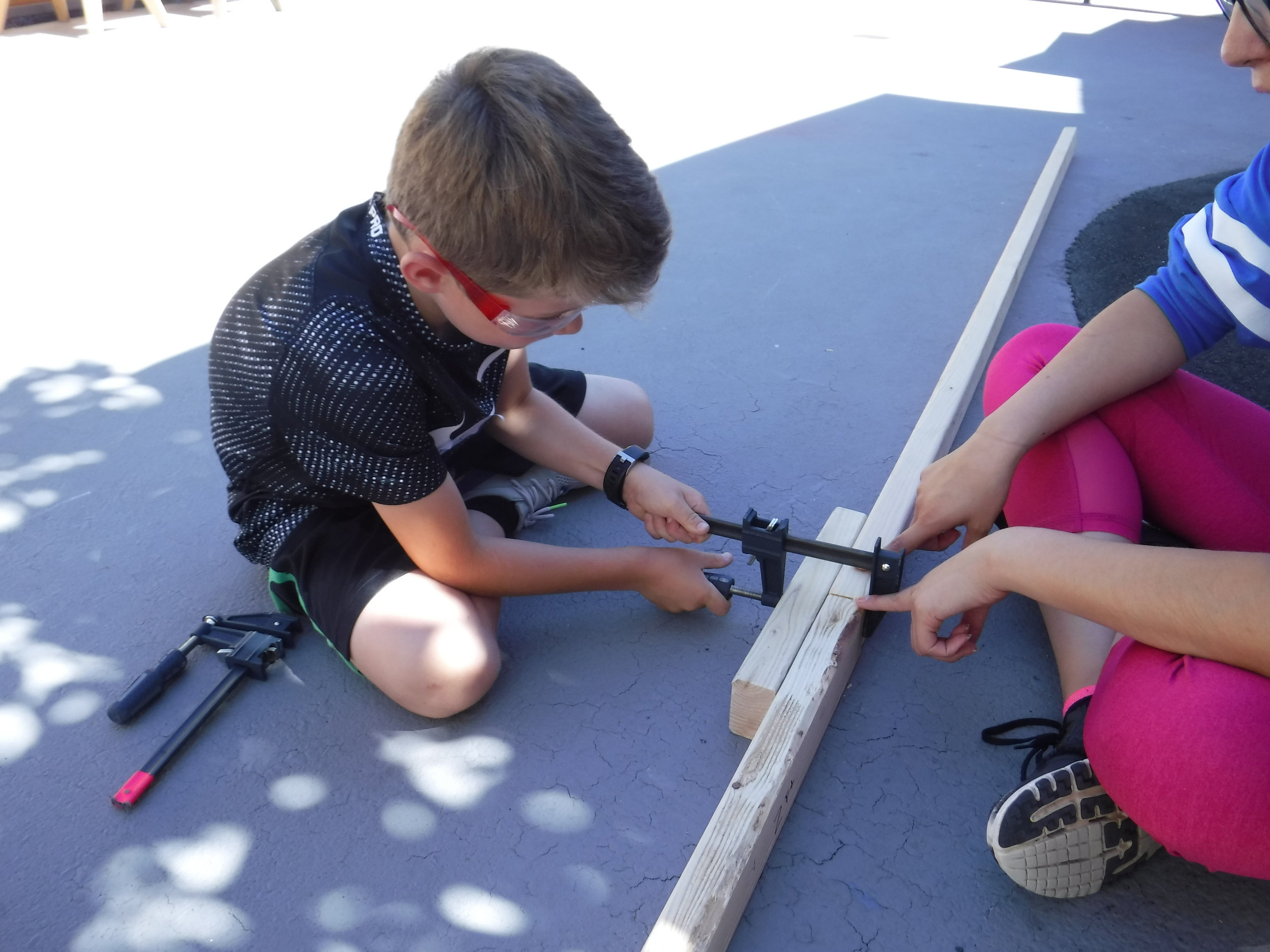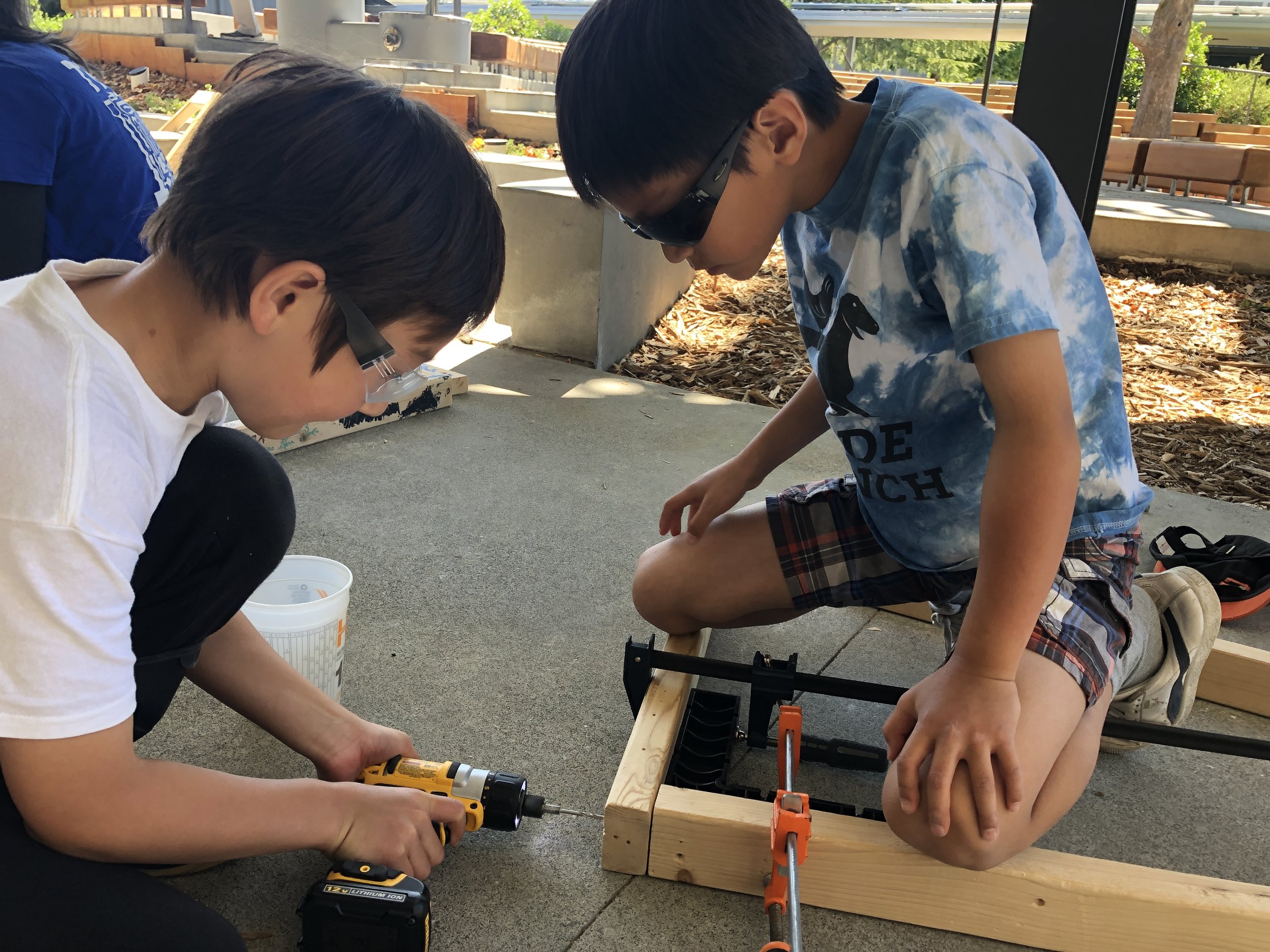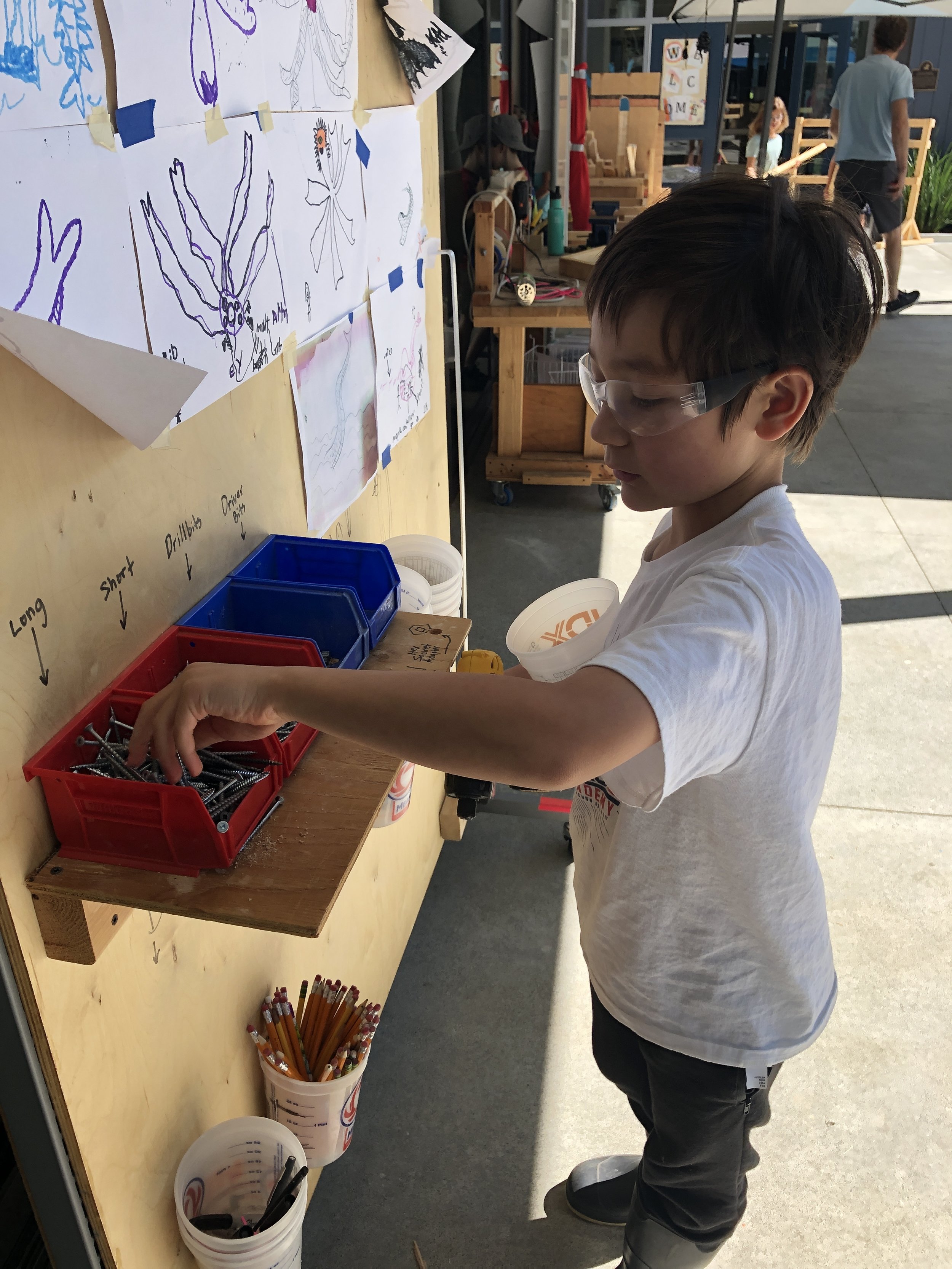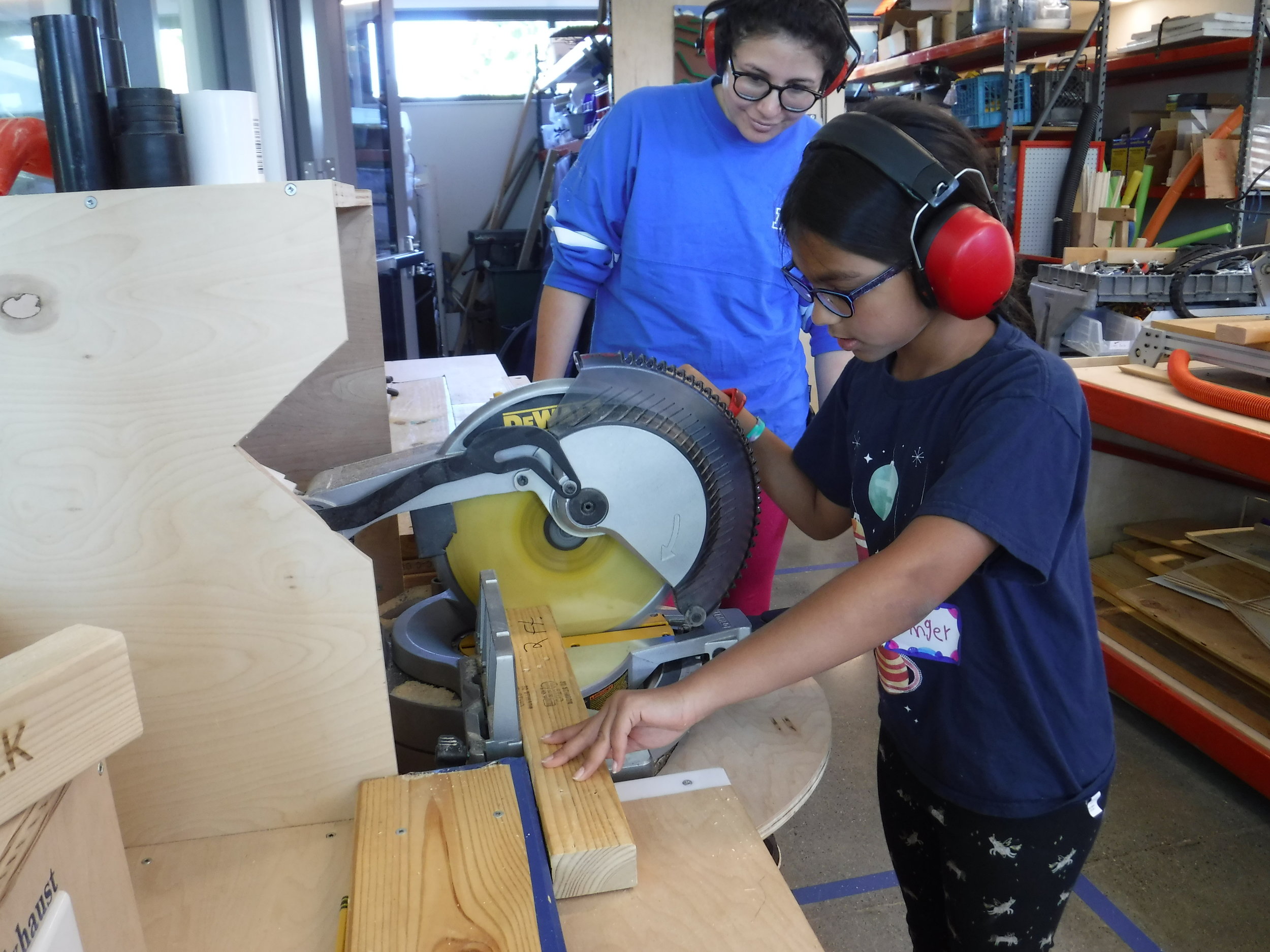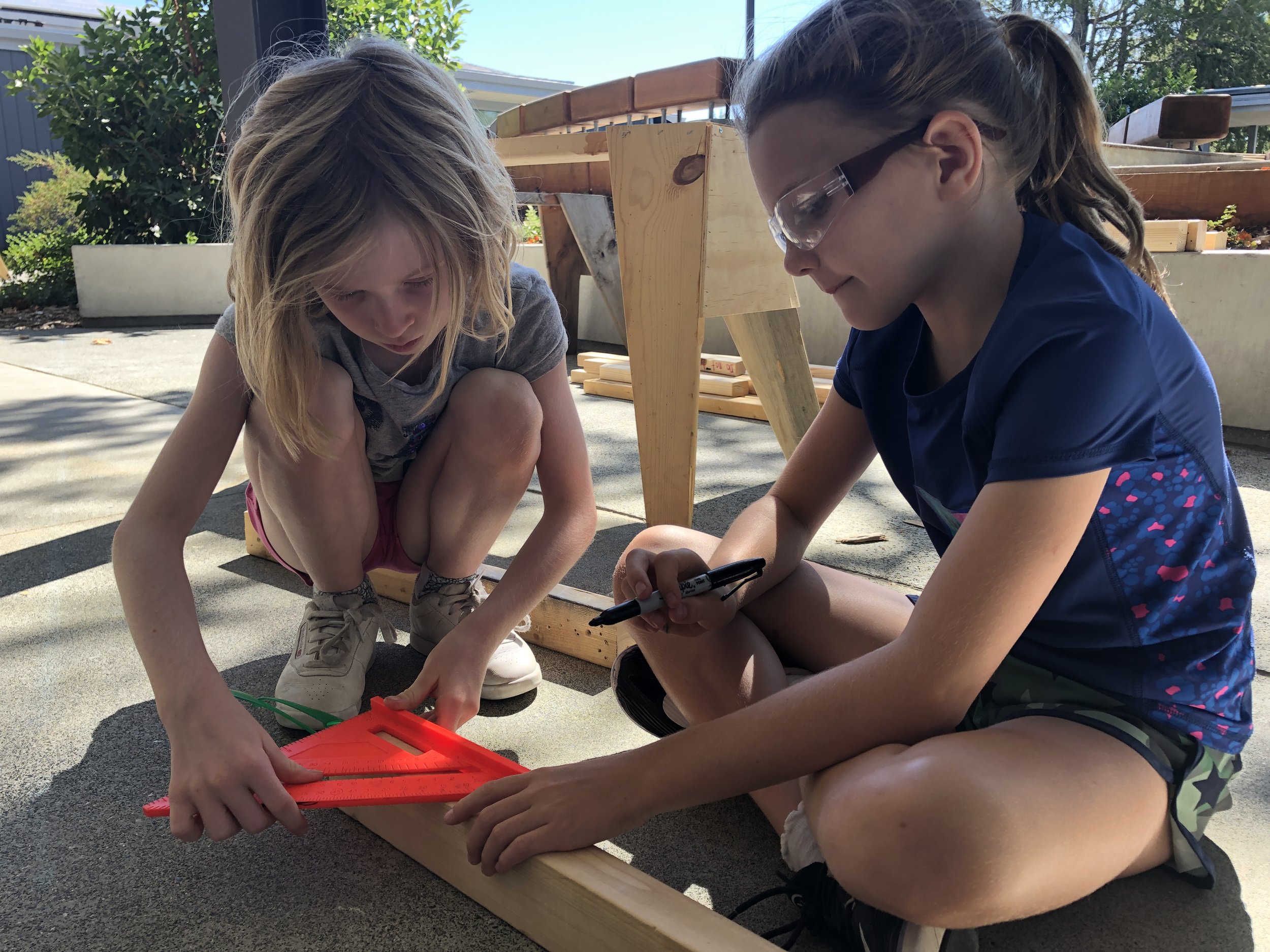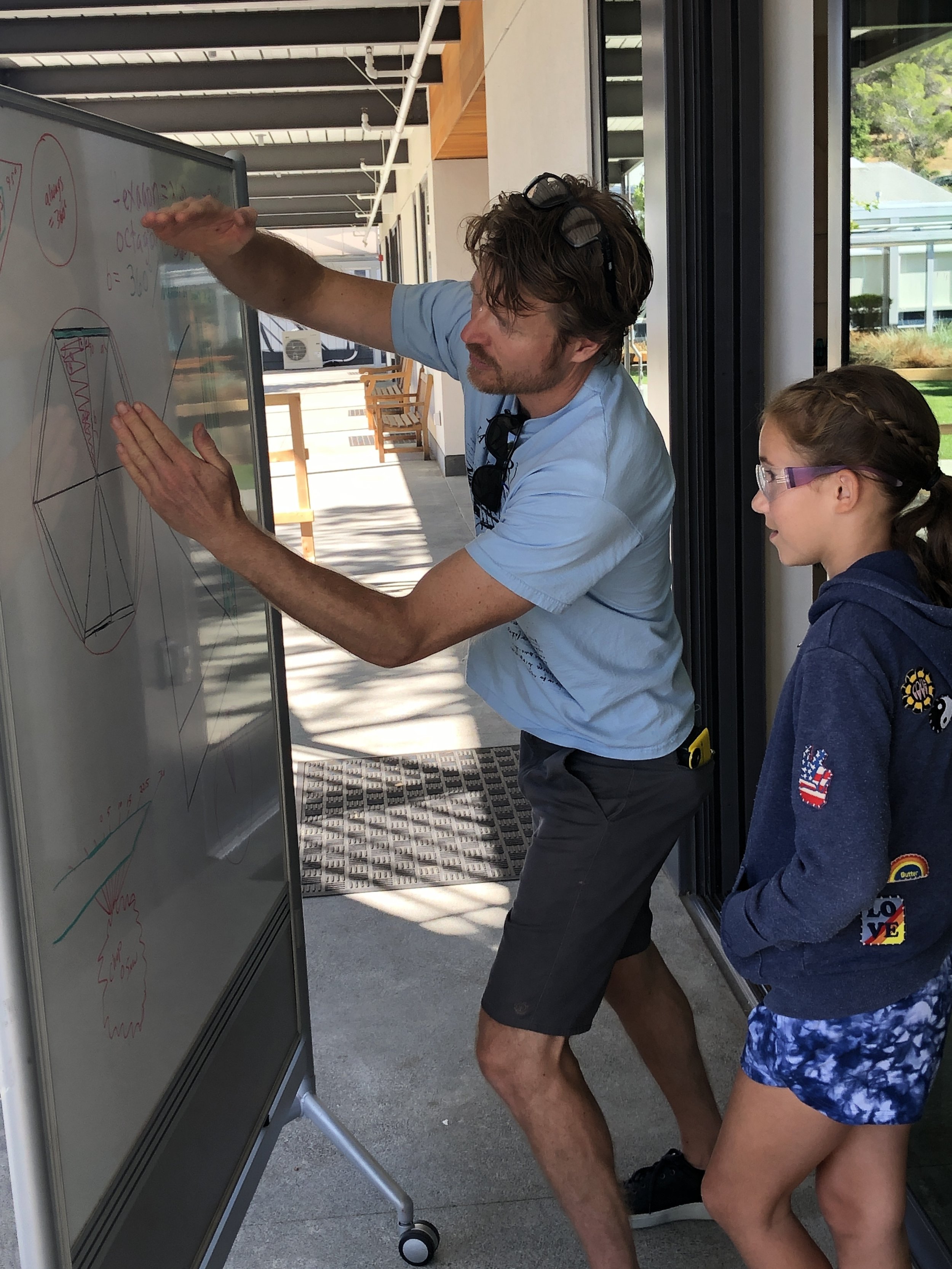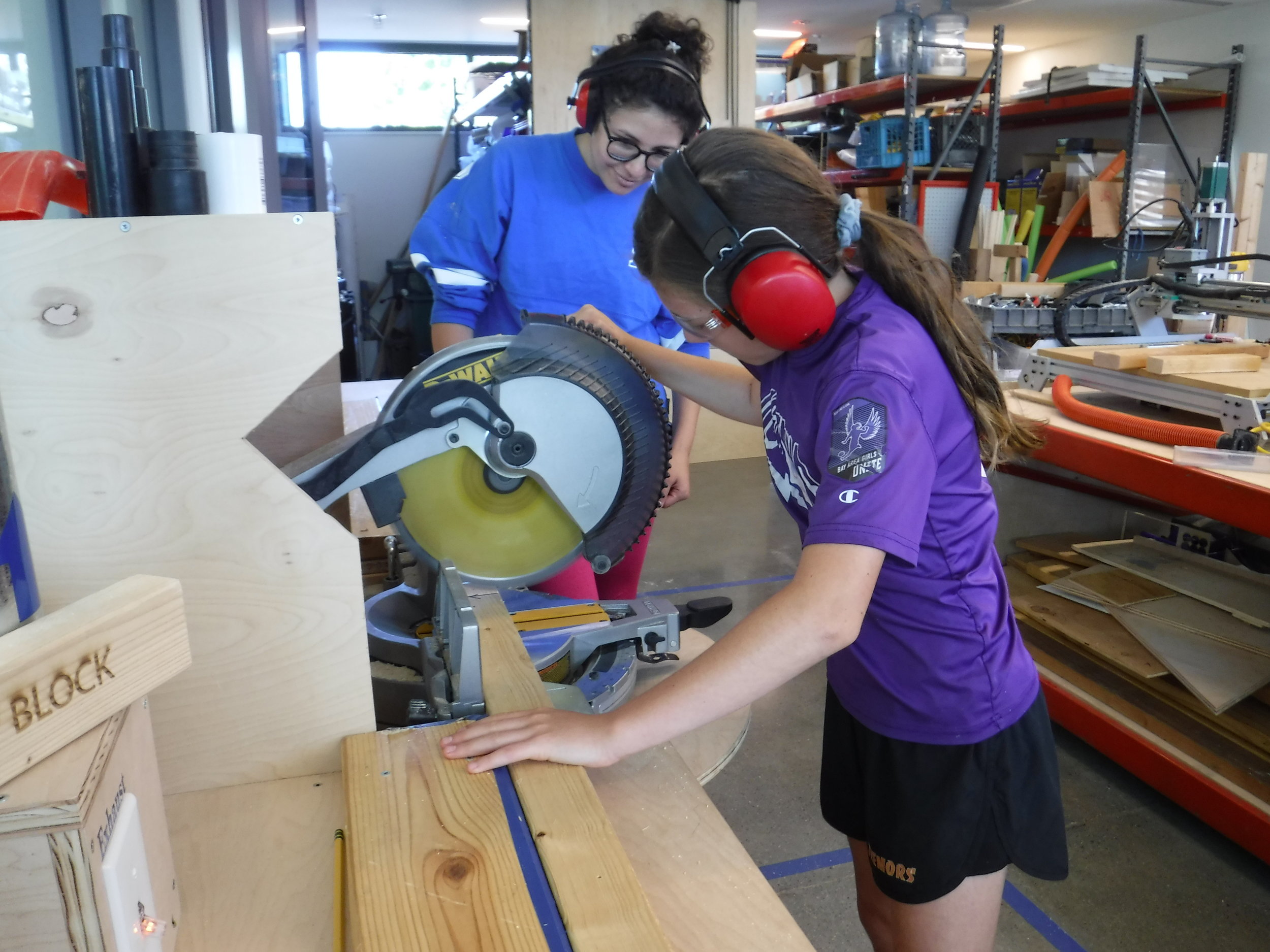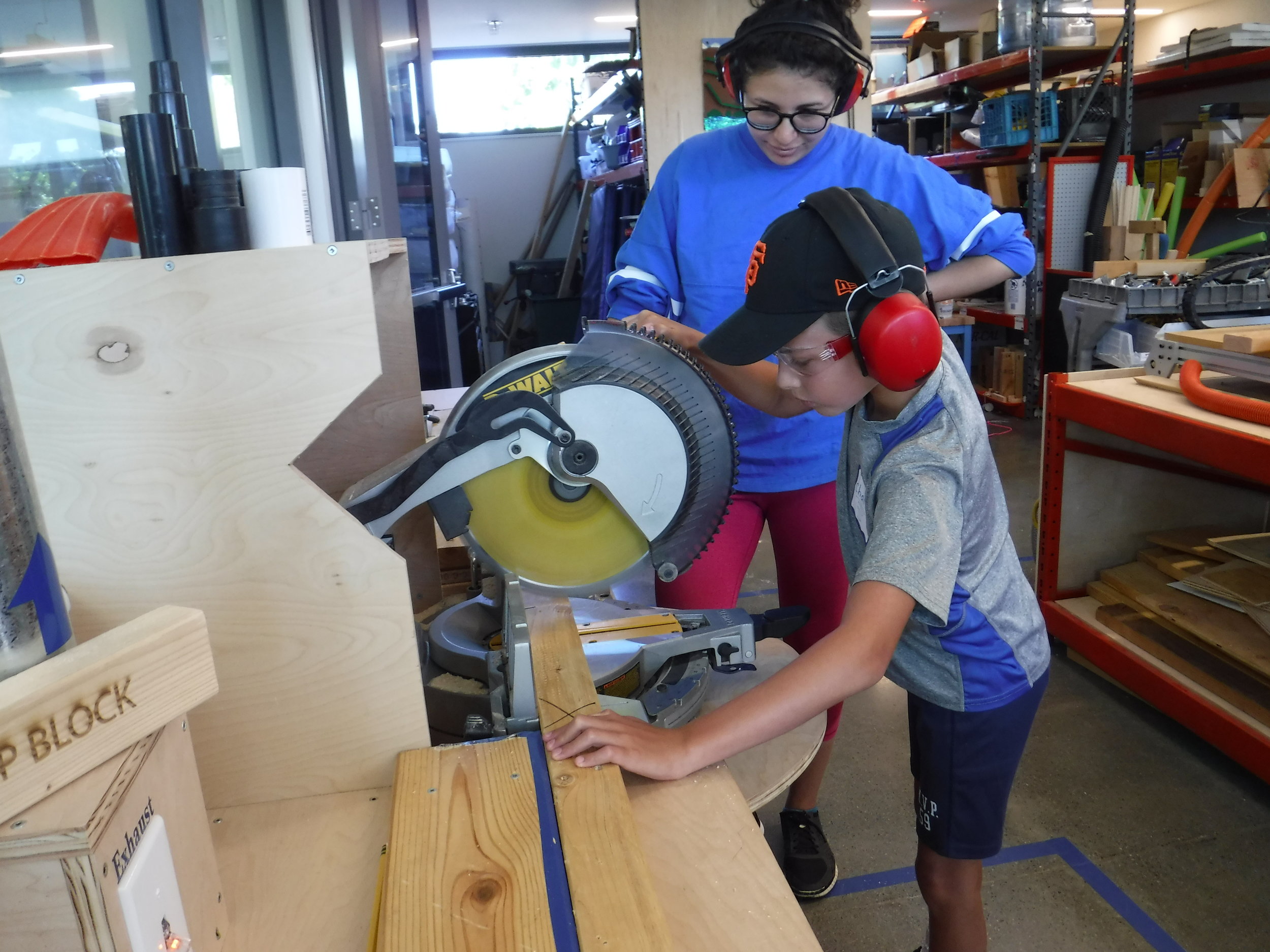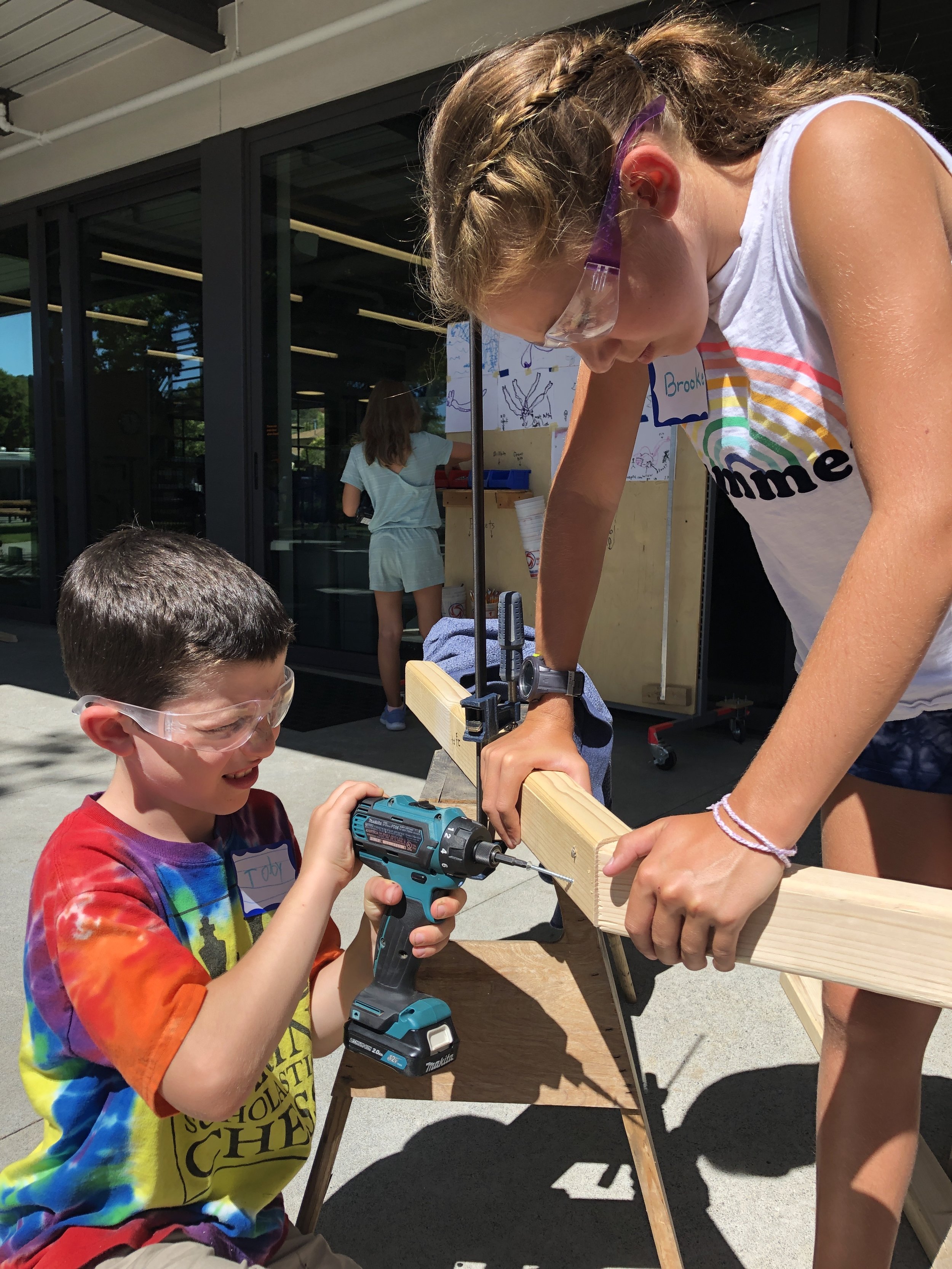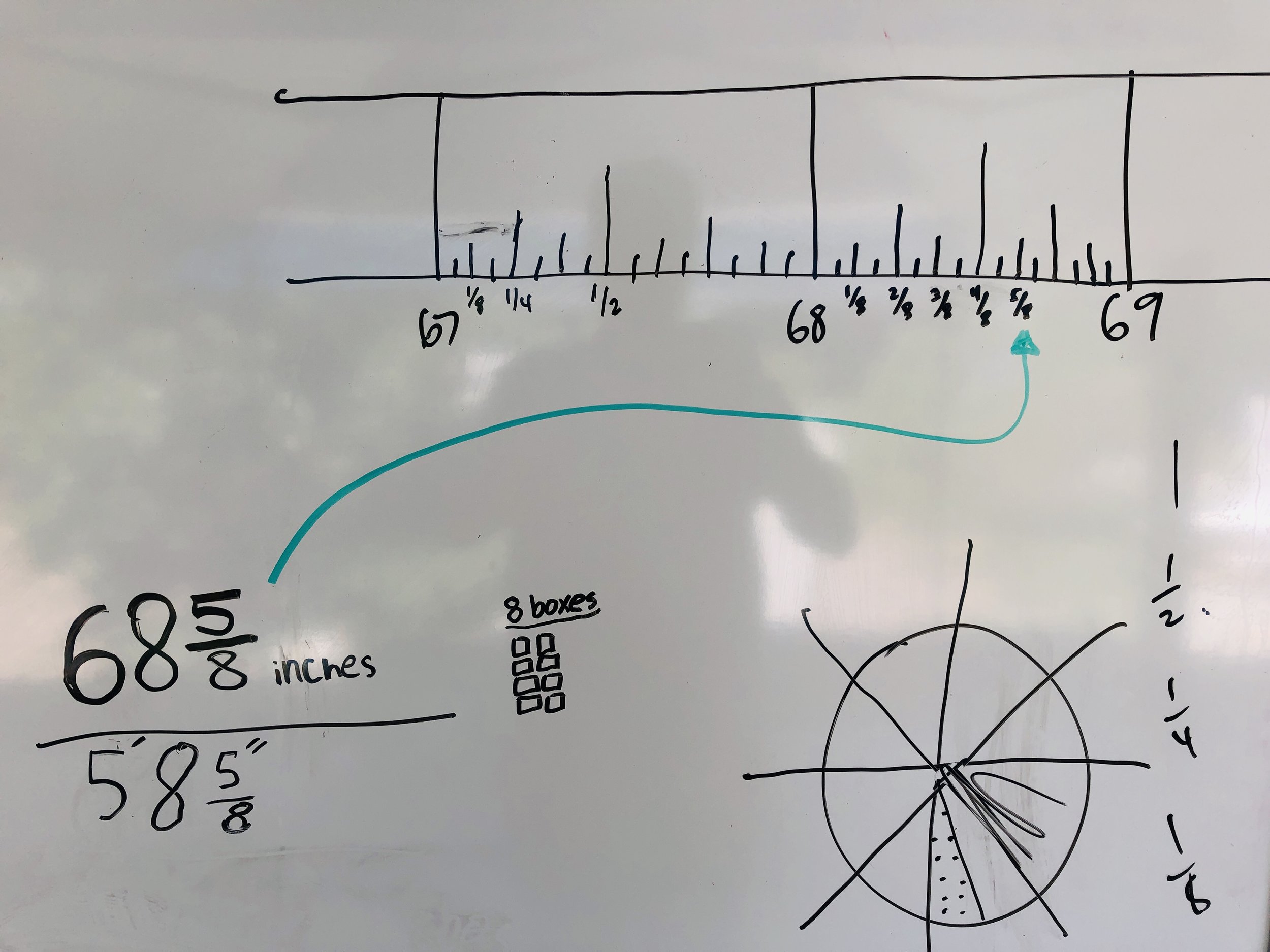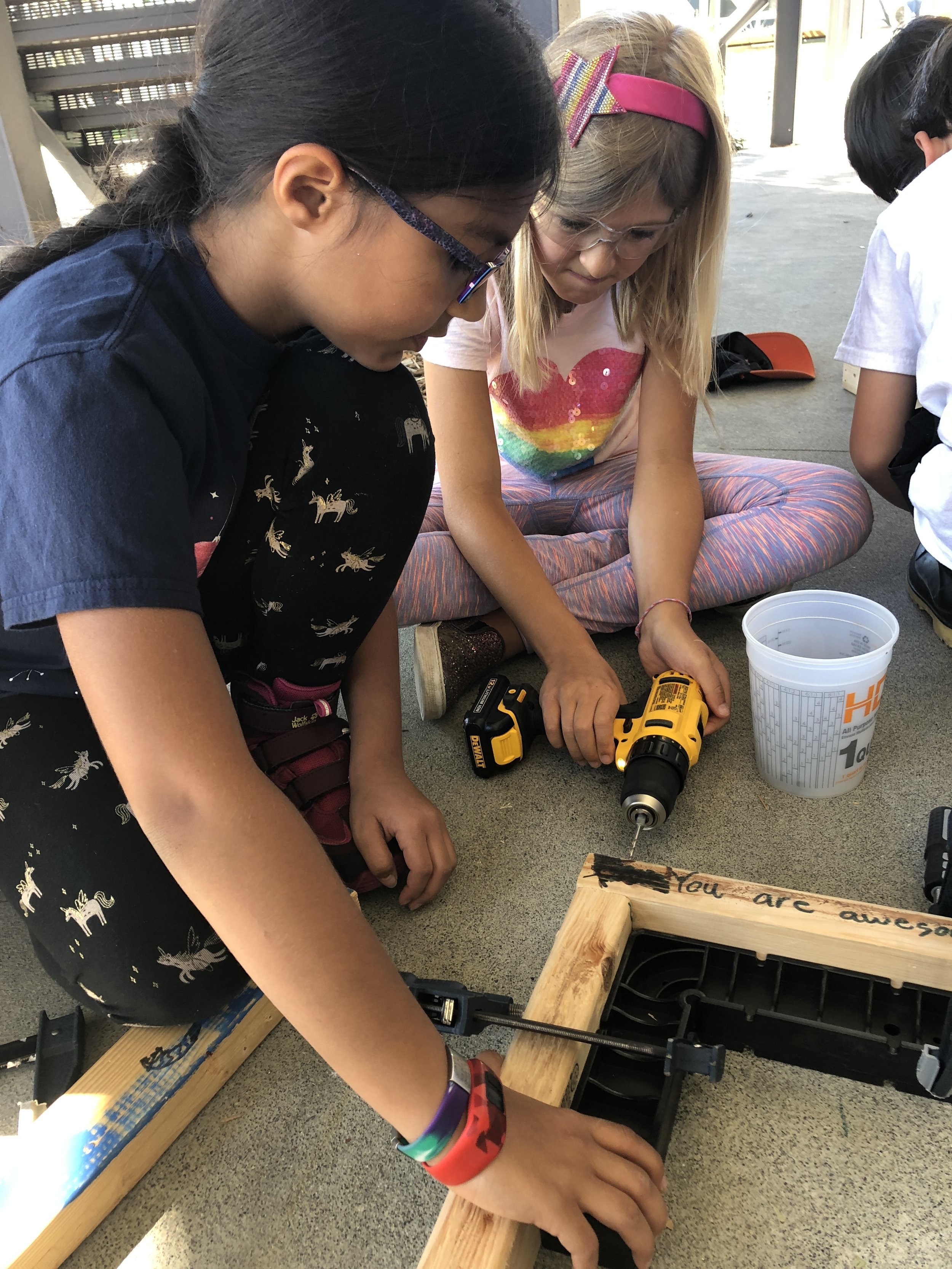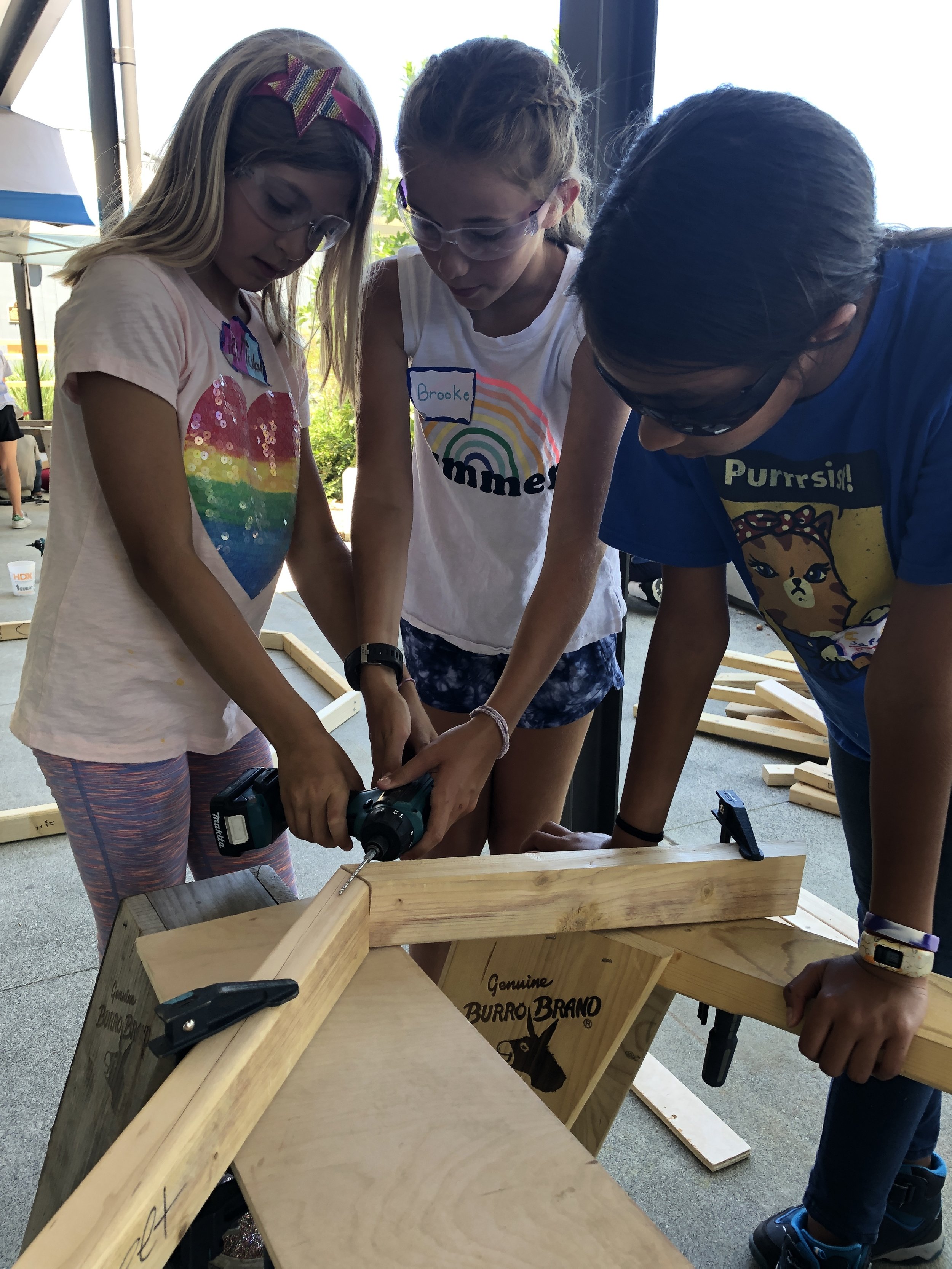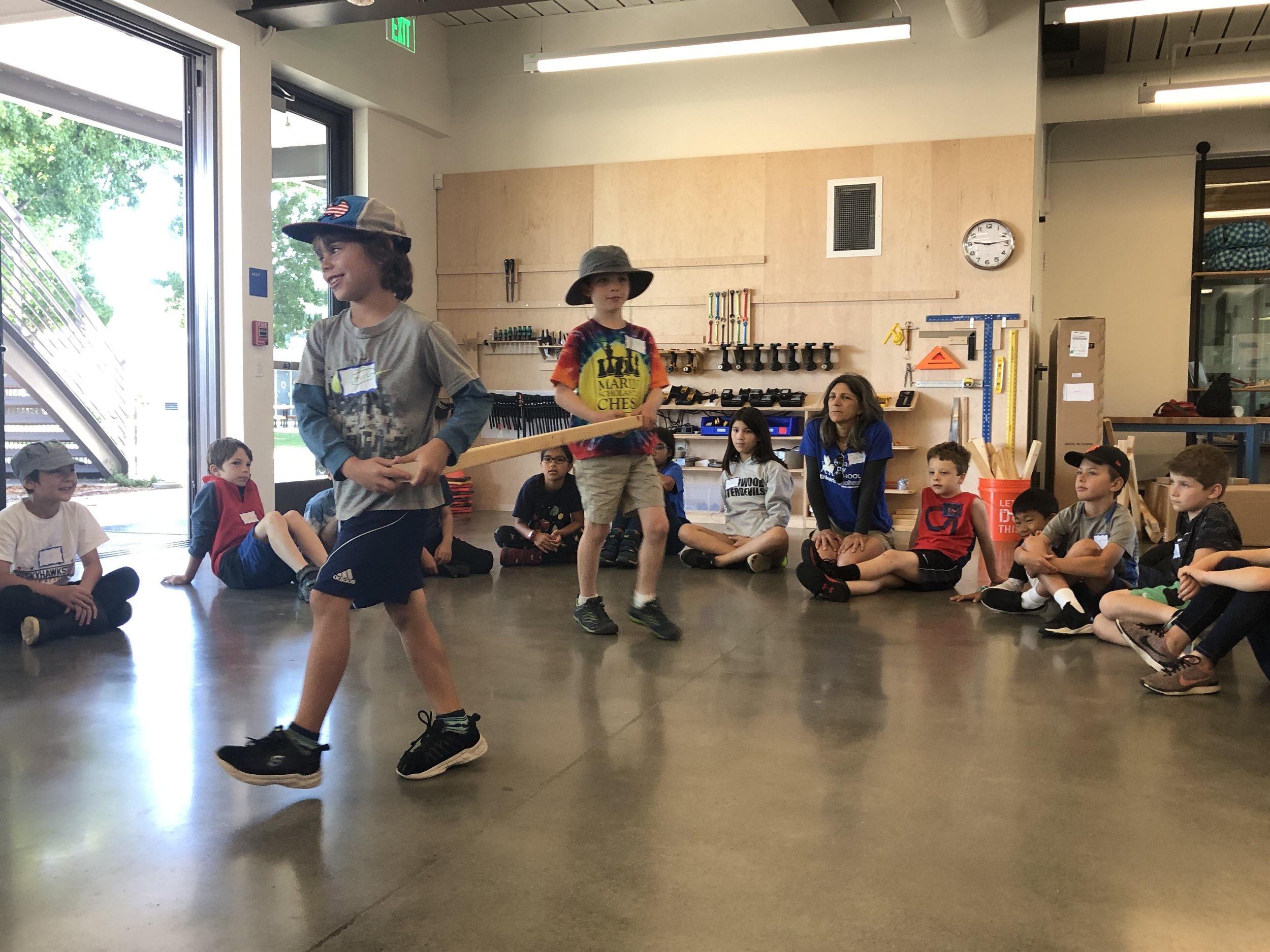The Search for Sea Monsters - Day 2 - Week 4 (Mark Day School)
We know that math is a huge part of building and tinkering. And we know that to build our submarine and sea monster, we will need to make both octagons and hexagons from wooden 2x3s. Today’s circle started with a silly skit with a serious message: how to carry wood. An eight foot 2x3 weighs almost eight pounds and has two hard ends. So we learn how to ask a friend to carry one end while we take the other and how to communicate while moving about our spaces.
Those eight foot 2x3s often end up at our chop saw station with a line drawn for each cut.
Then it was time for an engineering lesson from David. He meticulously led us through an understanding of how triangles are a fundamental part of polygons (and indeed, of geometry in general) and how we can rely on a triangle’s special relationships between side lengths and angle measurements. Specifically, we all needed to know what angles to cut at the ends of our 2x3s to create an octagon and a hexagon. The formula for a regular polygon is 360° ÷ (number of sides x 2). So a hexagon would require angle cuts of 30° because 360° ÷ 12 = 30°. And since our chop saw can pivot side to side, we’re armed with everything we need to make six — or eight — of our polygon sides.
Cutting a 30° angle on the chop saw.
After a busy morning building and a long break at the park for lunch, Jayson introduced another engineering concept: structural reinforcement. He posed several questions to the tinkerers: how many screws is the ideal number for connecting two pieces of wood? One? Two? Three? Seven? Twenty? And how would we know…? When Jayson pushes together two pieces of wood connected by seven screws and we all hear the creaking and then breaking of the wood, it’s evident that screws alone aren’t enough (we like to say “screws aren’t magical”). We observed what happens when wood is connected using “sheer strength” (pushing down on screws) versus compression (pushing down on another piece of wood). And once again, triangles play a big part in reinforcing large structures. The demonstration had an immediate effect as one of our tinkerers thought through how best to reinforce the body of the sea monster during our afternoon build and suggested a compression method.
We had two long build periods today and our tinkerers definitely tried harder than usual. The chop saw line looked like the wait for a ride at Disneyland and as soon as one measured and angle-cut piece was completed and checked off of our “cut list,” a new piece of wood was grabbed out of our wood bin and a measuring tape, speed square and pencil were employed to make the next one.
By pivoting a speed square at a corner, it’s possible to draw a precise angle on the wood.
Drills are two-handed tools. We use clamps to provide stability while we drive screws.
A really wonderful thing happens at Tinkering School because of the age range of our tinkerers (7 to 11 years old) and also the fact that we have some folks joining us who have been through the camp in previous weeks and years: mentoring. One of our tinkerers had just assembled an octagon and a few of our other tinkerers needed to know how to put together a hexagon. The steps are similar so it made sense to have peer-to-peer instruction. There’s a great tip in this video: if you need to drill at an angle, start by drilling straight into the wood and then use the starter hole as a guide for angling the drill bit.
We now have the outline of the front of the submarine, a section of the sea monster’s body almost complete, and the frame of the monster’s head that will support a moveable jaw. One of our tinkerers was adding hinges to it just before our “reset” cleanup clap started.
It’s going to be a busy day tomorrow for sure! I can’t wait to see what our tinkerers make next.
This submarine is going to be big… much bigger than ourselves.
Figuring out how the jaws will work.
Click through the gallery below for more photos from today. For many more from the week, visit our Flickr page.
